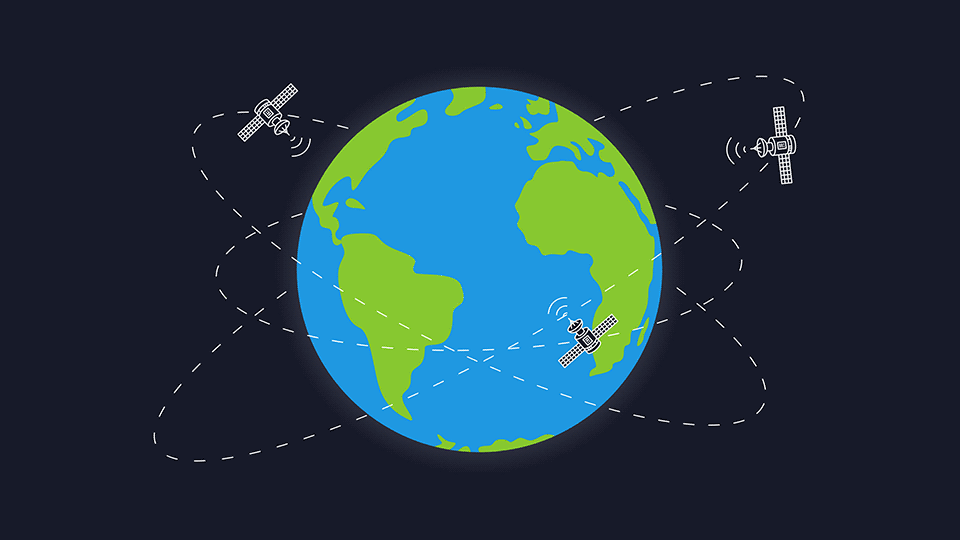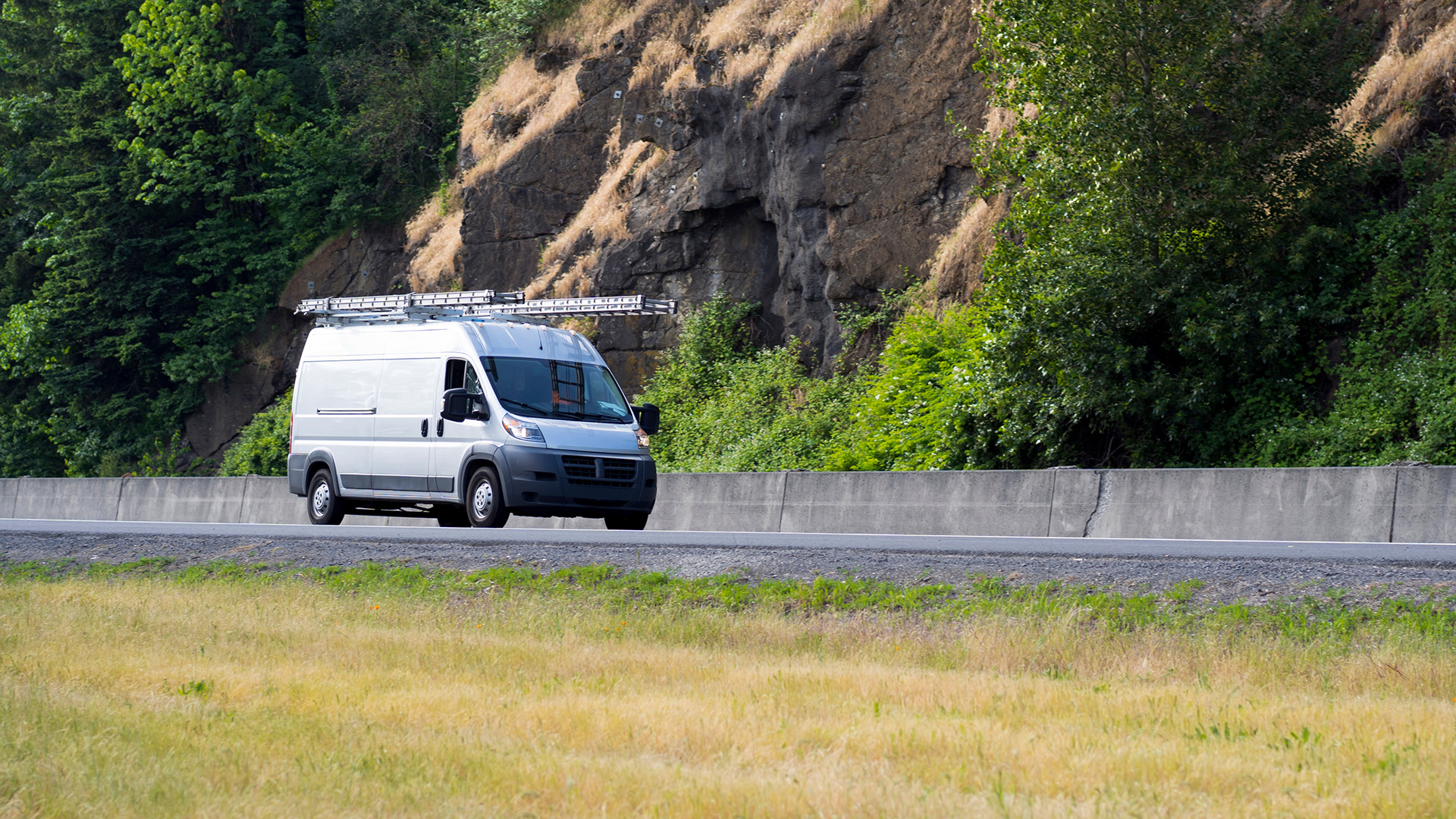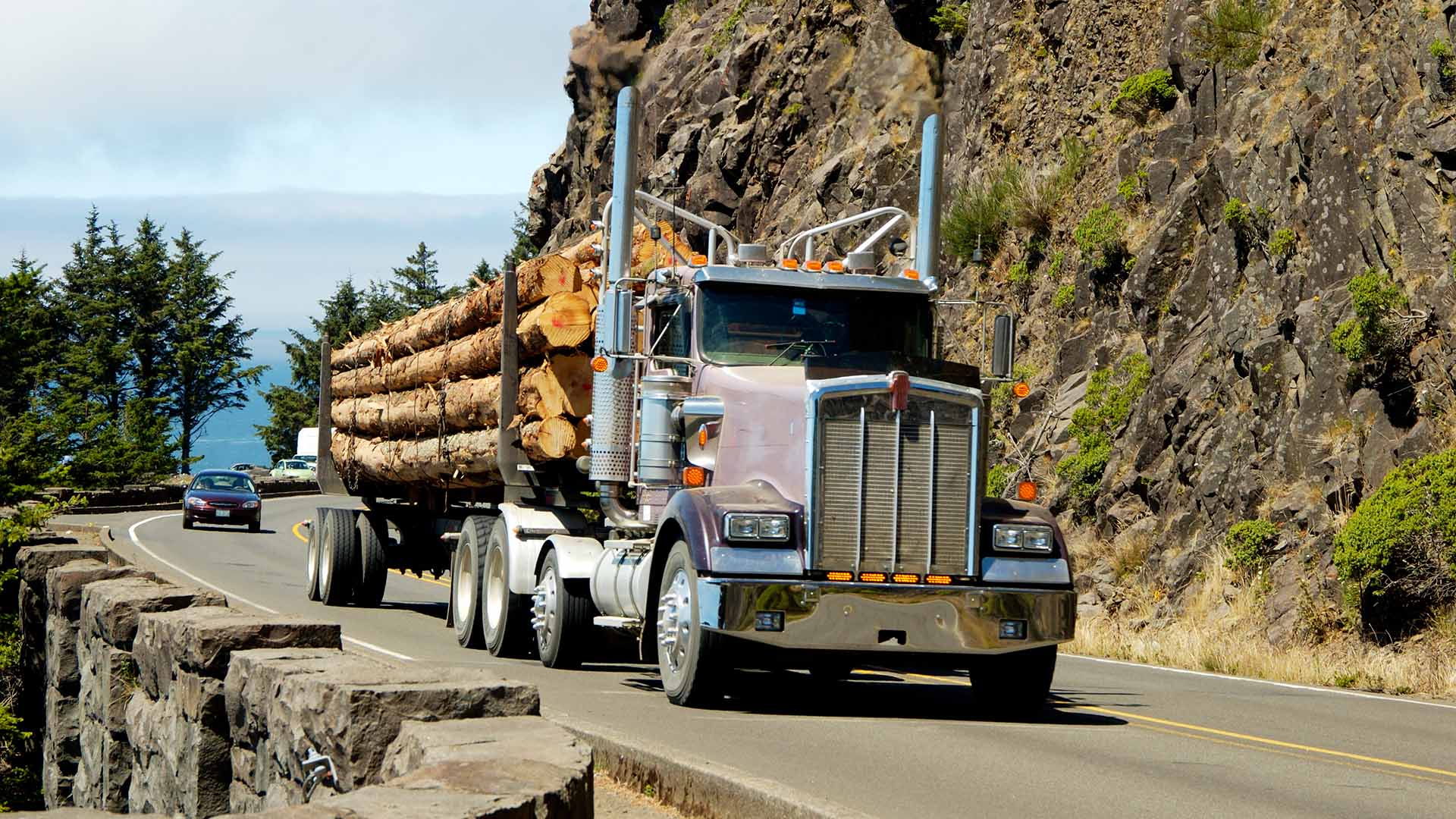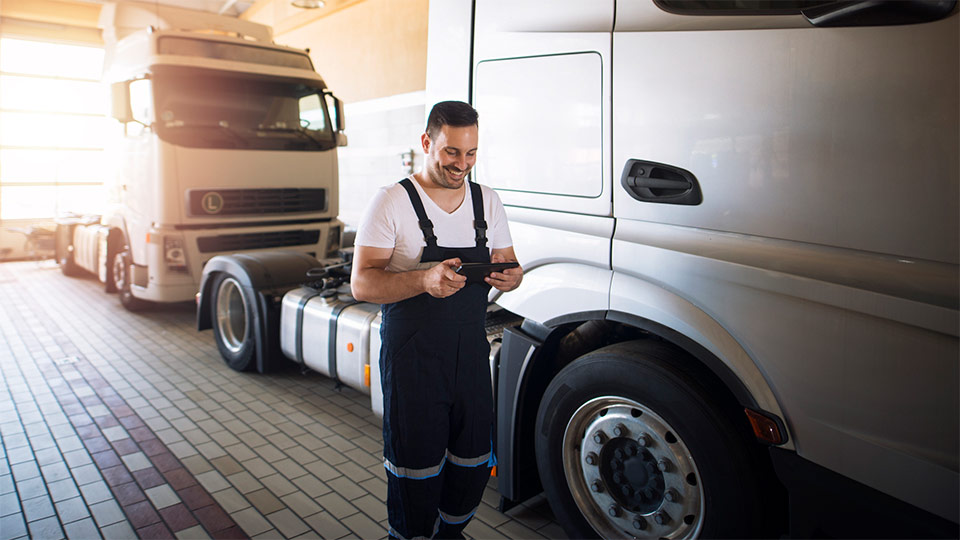How autonomous trucks will change the trucking industry
Read about the big players in autonomous trucks and learn which industries are leading in self-driving technology.

By Phil Bugdahn
Dec 12, 2017
Updated: Apr 4, 2025

Self-driving cars get a lot of attention. However, the advances happening in autonomous trucks are just as significant. In fact, self-driving trucks are at the forefront of the technology with research getting applied in ways that could improve productivity throughout the entire industry, and lessen traffic congestion near and around ports and major distribution areas. Autonomous trucks are already operating in real-world test pilots on U.S. highways and in ports.
See also: The impact of heavy-duty electric vehicles entering the market
Why self-driving trucks?
Self-driving trucks work just like their smaller self-driving car counterpart. Using radar sensors and cameras, autonomous trucks can follow each other at the same speed on a highway, for example, in a strategy called platooning. This not only helps with traffic but it helps with truck fuel economy too.
The trucks are able to handle stop-and-go traffic, which is why serious efforts are being put into truck automation around ports, which could make the entire process more efficient and increase productivity. Based on trucking industry statistics, 11.46 billion tons of freight is moved by U.S. trucks annually.
This raises the question of how this technology will affect trucking — an industry plagued by driver shortages but is also the backbone of how goods get around in the U.S.
The big players in autonomous trucks
Let’s first take a look at the major players developing autonomous trucks and how these trucks are being put to use. There are currently a number of companies developing autonomous vehicle technology for heavy-duty trucks. In fact, trucks with some degree of autonomous technology are already being tested on North American roads.
- Daimler — In 2015, Daimler developed an autonomous version of its Freightliner truck, named “Inspiration.”[2] This truck is able drive on a highway and stay in its lane, and was the first truck licensed to operate on a U.S. highway (in Las Vegas). The current version is unable to pass slower vehicles, enter or exit a freeway, or maneuver through a city on its own, but this is significant progress nonetheless.
- Volvo — At the Volvo Concept Lab in Sweden, Volvo Group is working on multiple types of autonomous trucks such as testing refuse trucks in real-world environments.[3] The company has been particularly focused on heavy-duty highway platooning and getting trucks from different manufacturers to talk to each other. With air drag accounting for 25% of a truck’s fuel economy, platooning has the potential to seriously improve truck highway MPG. In October 2017 Volvo announced it’s launching a multi-brand platooning test in Sweden.[4] It’s also partnering, along with other companies, with startups in the U.S. like Peloton Technology to test platooning on U.S. highways and city streets.
- Tesla — Tesla made a big splash in November when Elon Musk revealed its new Heavy-Duty electric trucks. The Tesla Semi has a 500 mile range, goes 0-60 mph in 20 seconds, and is more aerodynamic than a Bugatti Chiron supercar. The trucks will depend on a network of solar-powered megachargers that is still to be built.
- Uber — Another company Otto, owned by Uber, is working to produce kits that can be fitted to existing trucks so they can operate autonomously on highways. The technology wouldn’t work in city street scenarios, but that’s what’s allowing them to quickly accelerate the idea of offering aftermarket add-ons just for highway use. The company has equipped five existing trucks with its kits, which include cameras and radar and Lidar sensors. The trucks are currently being tested on freeways in the U.S. and the company is predicting that it will have a fleet ready by early 2017.
- U.S. Military — The military could also of course benefit from autonomous trucks and convoys, so it’s no surprise that they’re also involved in the race to self-driving trucks. The U.S. military recently started testing self-driving convoys that could deliver supplies to soldiers.[5] It could mean saving on not just fuel economy and on time but saving soldiers’ lives as well. Soldiers would ride nearby in better armored vehicles and can be completely focused on their surroundings instead of driving. They’re testing the vehicle over narrow and dangerous bridges and other types of terrain seen out in the battlefield.
- General Motors — Also entering the space, GM’s most notable project is its GM SURUS vehicle which stands for Silent Utility Rover Universal Superstructure. The vehicle is a multi-purpose truck that would be best in military, emergency, port, and utility applications and is powered by a hydrogen fuel cell electric power plant with a 400-mile range that can carry loads along the entirety of the platform. The truck is also outfitted with autonomous technology, so a “platform with wheels” this could end up being a prized piece of equipment in many industries.
Self-driving trucks in action
Among all that testing, there’s also several autonomous truck applications already in service and have been for several years or are about to.
Mining Industry: The mining industry is one of the first industries to start using autonomous trucks in real-world scenarios. For example, Caterpillar has automated some of its yellow iron machines needed in mining operations by using its autonomous Cat Command system. The company announced in September 2017 that it sold another 100 mining trucks to one of the world’s largest iron ore producers located in Australia.
Caterpillar reported that since it deployed 56 of these trucks back in 2013, the mining company has seen a 20% increase in productivity at the mine using the automated trucks. The vehicles are capable of communicating with manned and unmanned vehicles, and equipment working in the mine. As of September, the trucks had hauled 400-plus million metric tons of material without a single injury.
Volvo has been working on similar technology as well, sending the first completely fully autonomous truck into an underground mine in September 2016.[6] Nearly a mile beneath the surface, the autonomous truck was able to function and still communicate in these rugged conditions through narrow tunnels.
Telematics also has a ruggedized solution for harsh conditions and off road vehicles. Read more here: When Is a GO RUGGED Device Required?
Mail Deliveries: Other real-world applications include the U.S. Postal Service. It plans to deploy autonomous mail carrier trucks in the next seven years. With more than 225,000 vehicles in fleet, the agency is working with the University of Michigan to develop an
“Autonomous Rural Delivery Vehicle,” and plans to launch it across rural routes nationally as soon as 2025. USPS wants to start with rural routes since there are fewer hazards and pedestrians that pop up without warning.
Just like regular truck drivers, the Postal Service doesn’t expect it to affect carrier jobs, since a driver would still be needed to go on foot to take the mail to the door and post office boxes. But it would allow them to do it a lot faster, spending time getting ready for the next stop instead of focusing on driving.
Other companies like DHL, Google and Amazon are testing drones in conjunction with autonomous truck and van technology for package deliveries.[7] Delivery fleets in Europe are also leading in green fleet technology innovation.
What’s the impact on trucking?
While self-driving vehicle technology is still in its infancy, many questions are being raised about the impact this may have on the trucking industry. The first concern when thinking about autonomous vehicles is often safety. While people often question whether a vehicle driven by a computer could be as safe as one driven by a human, the current statistics show that human drivers may not be so safe.
Increasing Safety: In the U.S. in 2012, there were more than 330,000 truck accidents, which killed nearly 4,000 people. Approximately 90% of these accidents were caused by driver error.8 Several trucking companies have already started to equip their fleets with automated safety features such as automatic braking and lane departure systems.
The self-driving truck will likely progress gradually, with the first models only able to handle highway driving and requiring a backup human driver to take over should the machine fail to act correctly. It’s a long way off even as the technology progresses from being able to eliminate the need for a human driver altogether.
Easing Driver Shortage: Automation could also help alleviate the driver shortage. According to the American Trucking Associations (ATA), as of 2015 the driver shortage was at about 48,000 needed drivers.[9] The shortage is partly due to the cost and difficulty in obtaining a license. If technology improvements could make driving a truck safer and easier, the requirements for obtaining a license could be relaxed, perhaps encouraging more people to become drivers.
Allowing a computer to handle some tasks, such as driving on a highway, might also allow for restrictions on the number of hours a driver may drive to be relaxed. Currently drivers are limited to how much they may drive to ensure that they have had enough rest to drive safely. Autonomous vehicles would not be limited by such regulations, which would allow for much faster deliveries. Even making the task of driving simpler could improve profits and productivity for the industry.
So could we lose trucking jobs altogether? In 20 years, it’s possible, but for now, it’s important to point out that much of this technology still requires a driver at the helm and still playing a role in first- and last-mile driving. As one writer put it, truck drivers will become more like a harbor pilot bringing the ship into port. Otto, as mentioned earlier, said that it sees drivers becoming more like a logistics manager overseeing the technology.
That means the first hurdle will be to train current drivers on how to use this technology and become technologically savvy “logistics managers.”
Industry views are positive
And all this is supported by the main association in the industry, ATA. The American Trucking Associations stands behind the benefits of autonomous vehicle technology for safety, environment, productivity, efficiency, and driver health and wellness, the organization said in a policy paper released October 2017.[10] Though the organization is calling for, or rather not calling for, any sort of laws and regulations that would ever require automation, saying that it should be the choice of individual companies to adopt any levels of automation in their fleets and operations, while it also calls for regulations that allow for the development of the technology across state lines.
Currently, regulations surrounding autonomous technology have not been dealt with nationally but a state-by-state, city-by-city basis:
“In the absence of federal regulation, states should support operations of commercial motor vehicle automated and connected technologies within their rights of intrastate jurisdiction,” the paper states.
The organization also urges technology developers and lawmakers to continue to consider the role of the driver, and that developers should, “center on solutions in which there remains a role for drivers, recognizing the duties and requirements drivers have beyond operating the vehicle.”
Eyeing development
While autonomous truck technology is still young, it is clear that over time the role humans will play in operating these vehicles is likely to decrease while safety and productivity increases. These changes will be an improvement for the industry — and will certainly be exciting to watch as developments unroll.
Read the next article in our Future series:
How autonomous driving will change our highways and cities
References:
- Freightliner. (2015). A Story of Infinite Inspiration. [Online]. Available: http://www.freightlinerinspiration.com/inspiration/
- AB Volvo. (2017, May 17). Volvo pioneers autonomous, self-driving refuse truck in the urban environment. [Online]. Available: http://www.volvogroup.com/en-en/news/2017/may/news-2561936.html
- AB Volvo. (2017, Oct. 19). Trucks talking to each-other in multi-brand platooning project. [Online]. Available: http://www.volvogroup.com/en-en/news/2017/oct/trucks-talking-to-each-other-in-multi-brand-platooning-project.html
- K. Lavery. (2017, Nov. 8). Convoy of Connectivity: U.S. Army Tests Autonomous Trucks in Michigan. [Online]. Available: http://wkar.org/post/convoy-connectivity-us-army-tests-autonomous-trucks-michigan#stream/0
- AB Volvo. (2016, Sep. 7). Volvo first in the world with self-driving truck in underground mine. [Online]. Available: “http://www.volvogroup.com/en-en/news/2016/sep/news-2297091.html
- M. McFarland. (2017, Oct. 11). DHL to test self-driving delivery trucks in 2018. [Online]. Available: http://money.cnn.com/2017/10/11/technology/future/dhl-autonomous-delivery-truck/index.html
- ATBS. (2015, Sep.). Self-driving trucks: Are truck drivers out of a job? [Online]. Available: http://www.atbsshow.com/self-driving-trucks
- ATA. (2017). Reports, Trends & Statistics. [Online]. Available: http://www.trucking.org/News_and_Information_Reports_Driver_Shortage.aspx
- ATA. (2017, Oct. 24). Automated Truck Policy. [Online]. Available: http://www.trucking.org/ATA%20Docs/News%20and%20Information/docs/Proposed%20Automated%20Truck%20Policy_24OCT2017_final.pdf
Subscribe to get industry tips and insights

Phil Bugdahn is an Internal Development Manager for Geotab.
Table of Contents
Subscribe to get industry tips and insights
Related posts



Field service is losing money to bad data: Go beyond GPS with smarter telematics
June 27, 2025
3 minute read

Unlock field service ROI: Your practical guide to connected operations playbook
June 9, 2025
3 minute read

Fuel efficiency techniques every truckload carrier should know
May 30, 2025
3 minute read
